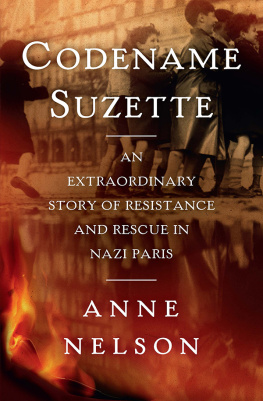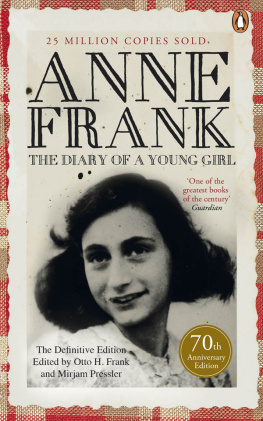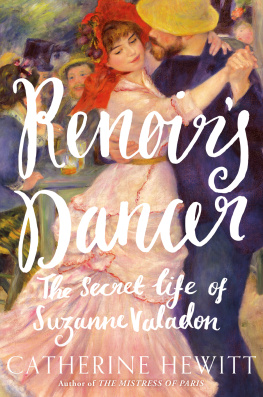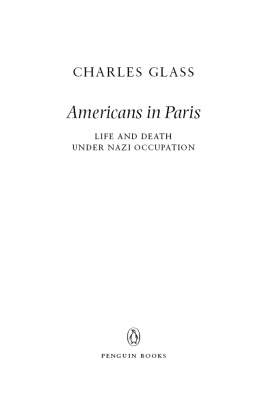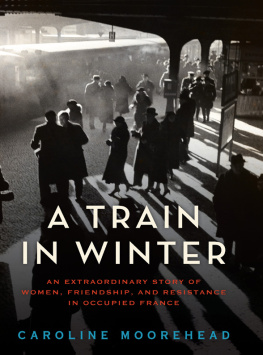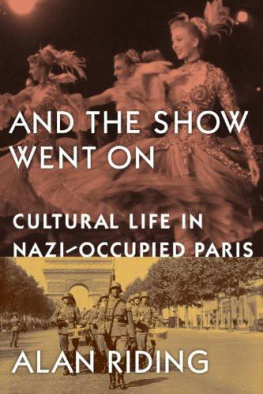| ALSO BY ANNE NELSON |
Red Orchestra: The Story of the Berlin Underground
and the Circle of Friends Who Resisted Hitler
Murder Under Two Flags: The U.S., Puerto Rico,
and the Cerro Maravilla Cover-Up
Savages: A Play
The Guys: A Play
First published in Australia and New Zealand by Allen & Unwin in 2017
First published in the United States in 2017 by Simon & Schuster
Copyright Anne Nelson, 2017
The right of Anne Nelson to be identified as Author of this Work has been asserted by her in accordance with the Copyright, Designs and Patents Act, 1988.
All rights reserved. No part of this book may be reproduced or transmitted in any form or by any means, electronic or mechanical, including photocopying, recording or by any information storage and retrieval system, without prior permission in writing from the publisher. The Australian Copyright Act 1968 (the Act) allows a maximum of one chapter or 10 per cent of this book, whichever is the greater, to be photocopied by any educational institution for its educational purposes provided that the educational institution (or body that administers it) has given a remuneration notice to the Copyright Agency (Australia) under the Act.
The extract on pages 113114 is used by permission of ditions Denol from La Petite fille du Vel dHiv by Annette Muller ditions Denol, 1991. All rights reserved.
Allen & Unwin
83 Alexander Street
Crows Nest NSW 2065
Australia
Phone: (612) 8425 0100
Email:
Web: www.allenandunwin.com
Cataloguing-in-Publication details are available
from the National Library of Australia
www.trove.nla.gov.au
ISBN 978 1 92526 620 7
eISBN 978 1 92557 564 4
Interior design by Lewelin Polanco
Cover design: Jason Ramirez / Romina Panetta
Cover photo: akg-images / Imagno. Group of children playing in the Tuileries Garden, Paris, c. 1930.
To Suzannes Children:
Pilette and Bazou,
Larissa, Sami, and Jacques.
The children she cared for then,
The children she would care for now.
I end up wondering if I wont simply decide to split the world in two: the world of those who cannot understand (even if they know, even if I tell them) and the world of those who can.
Hlne Berr, Journal, October 17, 1943
The Spaaks
Paul Spaak, writer; married to
Marie Janson Spaak, daughter of Belgian prime minister Paul Janson, sister to Prime Minister Paul-mile Janson, and worlds first female senator
Their Children
Paul-Henri Spaak, prime minister of Belgium; married Marguerite
Charles Spaak, screenwriter of Grand Illusion and numerous other films
Claude Spaak, playwright and art connoisseur; married Suzanne Lorge
Madeleine (Pichenette) Spaak Masson
The Lorges
Louis Lorge, financier; married to
Jeanne Bourson
Their Children
Suzanne (Suzette) Lorge; married Claude Spaak
Alice (Bunny) Lorge; married Milo Happ
Angle (Teddy) Lorge; married Maurice Fontaine
Claude and Suzanne Spaaks Children
Lucie (Pilette)
Paul-Louis (Bazou)
Ruth Peters, Suzanne Spaaks childhood friend and Claude Spaaks mistress
Soviet Agents
Leopold Trepper, Polish Jewish Communist
Georgie de Winter, Treppers young mistress
Hersch (Harry) and Miriam (Mira) Sokol, Jewish refugees turned radio operators
Madame May, Treppers elderly courier
Fernand Pauriol, French Communist who supported Treppers radio operations
The Jewish Underground
Leon Chertok, Jewish refugee doctor and a leader of the childrens rescue efforts
Sophie Schwartz Micnik, Polish trade unionist and womens leader
Charles Lederman, Polish-born French Jewish lawyer
Adam Rayski, Polish-born journalist and militant
douard (Arek) Kowalski, Jewish Communist military leader
Jewish Children Rescued by the Network
Larissa Gruszow
Sami Dassa
Jacques Alexandre
Simone and Armand Boruchowicz
The Doctors and the Ladies
Robert Debr, leading French Jewish pediatrician
Elisabeth de la Panouse, Countess de la Bourdonnaye, Debrs partner, known as Dexia
Fred Milhaud, French Jewish pediatrician working for the UGIF Jewish Council; married to
Denise Milhaud, president of the Entraide Temporaire relief organization
The Berrs (Raymond and Antoinette, their daughters Hlne and Denise; cousin Nicole Schneiderman; and Denises sister-in-law, Nicole Job), activists with Entraide Temporaire
Marguerite Peggy Camplan, MNCR partner
The Protestants
Pastor Paul Vergara, pastor at the Oratoire; married to Marcelle Vergara
Sylvain Vergara, the Vergaras teenage son
Eliane Vergara, the Vergaras oldest daughter, married to
Jacques Bruston, a member of the Gaullist Resistance
Marcelle Guillemot, social worker at La Clairire church soup kitchen
Odette Bchard, a member of the Oratoire who joined Entraide Temporaire
Maurice-William Girardot, church deacon and courier for funds
The Gaullists
Jean Moulin, leader of the Gaullist resistance
Jacques Grou-Radenez, master printer who helped the student movement Dfense de la France
Hugues Limonti, family friend of Marcelle Guillemot and Gaullist agent in Paris
The Neighbors
Colette, considered Frances greatest writer of her time, Palais Royal resident with her Jewish husband, Maurice Goudeket
Jean Cocteau, prodigious French artist and writer, Palais Royal resident with his lover, actor Jean Marais
The Germans
Theodor Dannecker, SS officer who organized deportations in Paris from September 1940 to July 1942
Helmut Knochen, SS officer placed in charge of the Gestapo in France in November 1940
Klaus Barbie, SS officer placed in charge of the Gestapo in Lyon in November 1942
Alois Brunner, SS officer placed in charge of the camp at Drancy in June 1943
Heinz Pannwitz, Gestapo officer in command of the Red Orchestra task force (Sonderkommando Rote Kapelle), charged with tracking down Leopold Trepper and his associates
Rudolf Rathke, Gestapo officer on the task force
The British
Benjamin Cowburn, agent of the Special Operations Executive (SOE)
Johnny Barrett, radio operator for the SOE
| 19371940 |
Suzanne and Claude Spaak moved to Paris in 1937, bringing their two children, a surrealist art collection, and a large wicker trunk. They were a golden couple, attractive, affluent, cultured; the move was designed to mend the fault lines. Claude was frustrated in his writing career, and their marriage had faltered. Maybe Paris would help.
Claude had outgrown Brussels, though the city had offered him every advantage. He owed many of them to his wife. Suzette was the oldest child of Louis Lorge, one of Belgiums leading financiers. A self-made man, he spent his life pursuing wealth and social status. He had married into a prominent family and employed German and English governesses for his daughters. He provided his family with a mansion in Brussels, a house in the country, and holidays on the French Riviera.
Louis doted on his firstborn, a petite blonde with long ringlets and a Cupids bow mouth. He decided that she should marry into the aristocracy and sent her to finishing school to study embroidery, piano, and household management. But she chafed at her fathers mercenary values and leaned toward literature and social reform.
Louis Lorge strongly opposed Suzannes choice of husband, but she stood firm. A last-minute complication arose. The couples mothers discovered that there was a third party to the romance, a Canadian classmate of Suzannes named Ruth Peters. The two girls shared everything, including an infatuation with Claude. The mothers sent Ruth home to Toronto, and Louis took measures to protect his daughters fortune. Rather than disbursing her dowry in a lump sum, he would pay it in monthly installments to guarantee her a good living.

